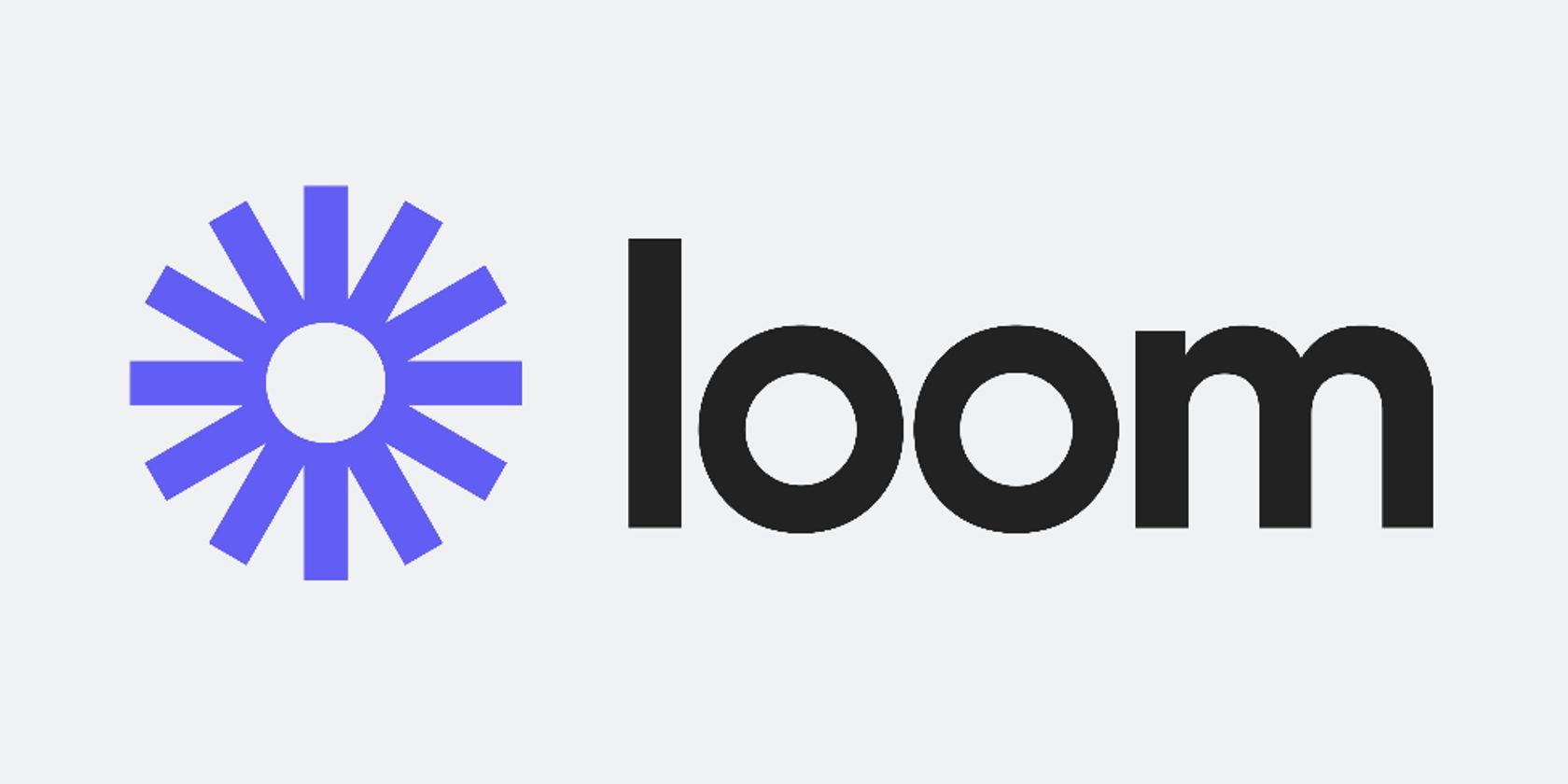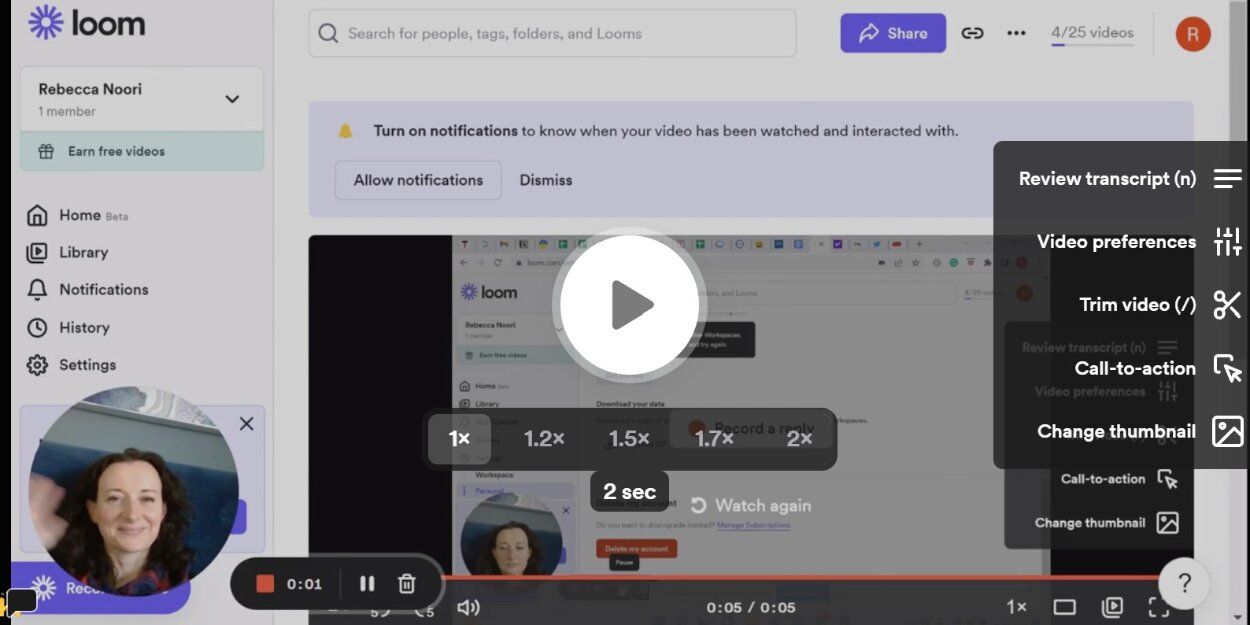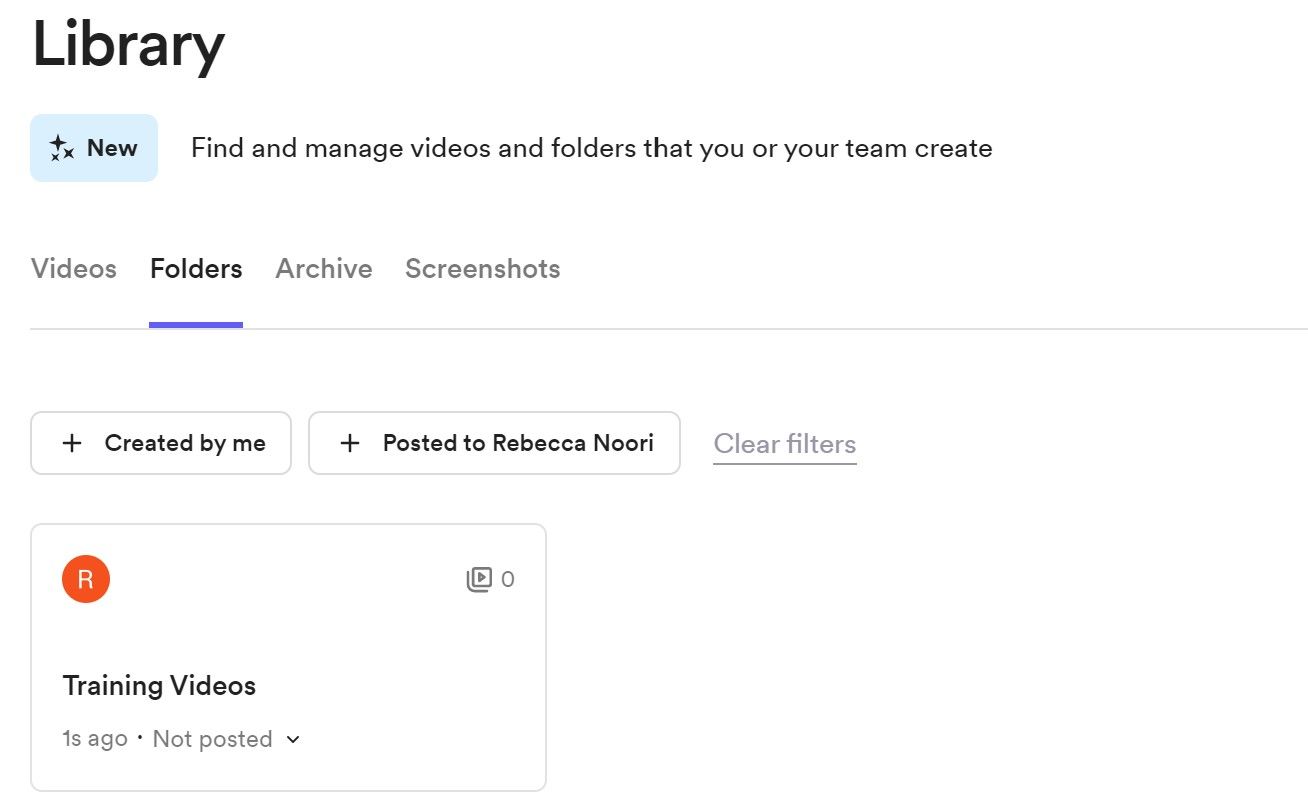Is your remote working day filled with video calls, Slack messages, and endless notifications? Yet, somehow you still feel disconnected from your coworkers.If this sounds familiar, Loom is the perfect collaboration tool for any distributed team—use it for everything from recruitment and onboarding, right through to pitching and presentations. Heck, you might even use it for virtual Christmas party games too.
How Does Loom Work?
If you’re unfamiliar with Loom, here’s a super quick rundown of what this software can do.
Loom is a one-way video app, meaning you record yourself, your entire screen, or a specific tab in your browser before saving the file and sending it to your colleagues or clients. They’ll review and respond with their own video at a suitable time.
The Top 9 Ways to Use Loom in Remote Work
Perhaps you’ve used Loom to record your screen before, but you’ve never fully got to grips with how to incorporate it into your remote working schedule. Follow these tips, and Loom will become an indispensable tool in your tech stack.
1. Onboarding Video
Onboarding new employees has always been important for employers, but it takes on new meaning in remote environments. Loom adds a personal touch to the faceless process of onboarding into a digital workplace.
Some ideas include:
- Recording a message from the boss to welcome a new remote recruit to the team.
- Encouraging the new recruit to upload a new Loom video to introduce themselves.
- Hosting a team directory with an individual Loom video stored for each team member—making it easy for employees to put faces to names.
2. Water Cooler Chats
Employees traditionally catch up over the water cooler in a physical office space and chat informally. Studies have shown this interaction increases productivity by as much as 10-15% per employee. Obviously, this effect is harder to achieve when working from home; so, virtual water coolers are springing up to help employees get to know their remote team.
Example: during designated downtime breaks, employees record a quick Loom video of their home office setup to share with their colleagues. You can also play Loom games to establish a friendly company culture.
3. Company Announcements
Some company announcements will be fun and positive news, while others can cause concern, especially if they're delivered in written format with room for confusion.
But remote leaders can find it difficult to connect or convey empathy in an email announcement or group Slack message. And employees may struggle to glean all the information they need from a text-based announcement.
Loom enables a company leader to get in front of the camera and speak with their workforce. A video provides the following verbal and non-verbal cues for employees to decipher:
- Tone and inflection: are more important than our choice of words, and second only to body language.
- Body language: An important way for employees to decode mood.
- Facial expressions: The way our faces express anger, sadness, surprise, etc., is universal across cultures.
- Gestures: To highlight and strengthen the verbal points mentioned in the message.
4. Customized Feedback
According to a report, 65% of employees want more feedback than they’re receiving. But in remote work, feedback can be difficult to get across. If you only have time to type out short Slack messages, punch notes in a Google Doc, or send an email one-liner, this feedback can come across as terse, and the recipient may struggle to understand the tone.
For anything more nuanced, where you need to cover a complex subject, you may find yourself typing out paragraphs and paragraphs of text to try and get your point across. Some may even book a call to discuss the details in person, which is challenging with busy schedules.
An alternative is to use Loom to deliver a quick feedback video. The recipient can see your face and understand your message. Better yet, they can repeat the video several times for clarification.
Pro tip: Add document links to your Loom video if you’re discussing a specific project.
5. Asynchronous Communications
Loom is one of the best asynchronous communication tools and is used as an alternative to Zoom calls (or similar), where you interact with your coworkers in real-time.
Colleagues record Loom videos for each other to watch and respond to at their own pace and without having to find time on a calendar. Why do we like Loom as an asynchronous tool?
- Loom prevents Zoom burnout.
- Loom enables you to work inclusively with colleagues or clients in different time zones.
- Loom is great for introverted remote workers who find real-time video calls overwhelming.
- Loom eliminates endless meetings to increase productivity.
Next time you’re trying to assemble a team for a video meeting, ask yourself if your message could better be delivered as a Loom file instead.
6. Team Training Resources
From onboarding training to upskilling your team members, use Loom to create bite-sized training videos for recipients to review at their own pace. Some top tips:
- Host Loom training videos in a dedicated training library and encourage your team members to add time-stamped questions, comments, or emojis.
- Keep your videos short, at around 5 minutes for maximum engagement and to deliver the most important information.
- Use the pause button to regain composure or redo your video if you’re not happy with the first take.
7. IT Troubleshooting
One of the biggest challenges in remote working is not having an IT technician onsite. Try a Loom video if you're fed up with explaining your IT issues over the phone or don't want to take numerous screenshots and document your issue in a message.
Simply record your screen for a few seconds to demo the problem you’re facing, and your support team will get to work ironing the issue out.
8. Video Pitching
Whether you need to pitch to potential customers, current clients, or members of your team, we all know traditional pitch emails can sometimes lack a personal touch and are often ignored.
Enter Loom as a way to add an entirely personalized message to a pitch deck and skyrocket engagement. Who can resist clicking on a video message that has been created specifically for them? Add your videos to emails or DMs for easy distribution.
9. Host Presentations
Loom makes it easy to give a presentation without the pressure of a live audience. Cheryl Jacklyn Chan of Made on Sundays describes the four reasons she prefers to deliver presentations by Loom.
- Introvertism: "Using Loom relieves all of my anxiety around having to do live presentations."
- Time zones: "My clients and I are typically a 6-9 hour time difference apart, making scheduling calls a complete disaster."
- Efficiency: "Using pre-recorded videos allows me to be more articulate and allows my clients to thoroughly gather their thoughts and feedback before sharing them."
- Create a personal experience: "Running a digital business can make it hard to connect with your clients, but adding this simple touch to your client presentations can make them feel like you're right in the room with them."
Get Started With Loom
Companies like Netflix, Twitter, Atlassian, and HubSpot are already using Loom to communicate in their organizations. Are you ready to join them? Once you've mastered the basics of making and sharing Loom videos, there are no limits to using async video messaging in your remote role.





